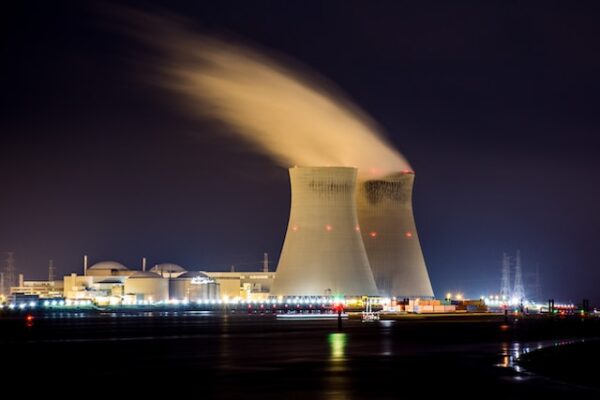Lost in the recent climate summit at COP28 in Dubai was the shift by environmentalists and governments toward a nuclear energy future. Calls to eliminate fossil fuels and cows predominated as usual, and John Kerry demanded that all coal-fired plants be banned. But a very substantial lane change took place as well: nuclear-powered options were granted a seat at the climate table.
Observers of climate summits may be forgiven if they’re confused over the direction the world is being led to combat the alleged climate-change Armageddon – clearly, the attendees are. Envoys to Dubai flew to the summit conspicuously in jets, dined on meat, and condemned China for its coal-fired plants while calling to manufacture more solar panels and EVs – which are heavily dependent on Chinese coal energy. In the shuffle to redistribute energy resources, it is inevitable that relatively cheap and clean nuclear power would eventually poke its head cautiously into the climate fray.
A Nuclear “Renaissance”?
Environmental purists have long scoffed at nuclear power as an ally against greenhouse gas emissions, but it appears the failure of the renewable energy pathways to deliver the promised salvation has induced the climate obsessives to reassess their Utopian objectives. In what is being diplomatically whitewashed as a nuclear “renaissance” rather than an about-face reversal, global and industry leaders are openly embracing the “nuclear option.” An international agreement signed by 22 nations while at COP28 pledged to triple nuclear energy capacity by 2050. Signatories included the US, Canada, Britain, and the UAE, which touted its own massive investments in nuclear reactors at the climate summit.
This dramatic shift in official climate policy may be driven by the recognition of the frightful shortcomings of renewable energy manufacturing or numerous claims that humanity is already past the point of no return from global warming impacts. Yet a forceful reality for conference attendees – and the world – is that China and other nations are proceeding full steam ahead with nuclear capacity. Perhaps Western nations are fathoming the consequences of being left behind on energy.
China Is Ascendant
Greta Thunberg howls against fossil fuels while demanding more renewable manufacturing – dependent on fossil fuels. The one-issue obsession with carbon dioxide has clouded futurist visions to “save” the world, into what may well prove to be a sort of modern collective energy suicide. Banning oil, natural gas, and coal before the alternatives have been created and implemented is dubious policy. Yet the carbon-focus foible means toxic chemicals spewing from Chinese manufacturing plants have been ignored, as have the consequences of shutting down oil and gas production and distribution. Also overlooked are the economic impacts of reckless government spending.
The most dramatic oversight of the climate agenda, though, may be national security. China is an amused partner at the table – pledging climate policy commitments while ramping up coal-fired plants and nuclear power. China views coal as a national security resource, as it has enormous quantities of black gold. It also understands the power and profitability inherent in nuclear energy, and is currently constructing all six types of fourth-generation nuclear reactors determined by an international consortium to be safer than traditional reactors.
Nuclear Utopia?
Dreams of Utopia invariably crash down with earthly gravitation. Few but the most extremist environmental groups now insist that nuclear power is off the table, especially as new inroads into nuclear fusion are developed. Proponents of climate change action are increasingly coming to terms with the factual reality that renewable energy manufacturing cannot possibly provide the baseload of power the world requires. This leaves nuclear power as not only a viable option, but the planet’s only known hope for anthropogenic rescue from alleged human-caused global warming.
